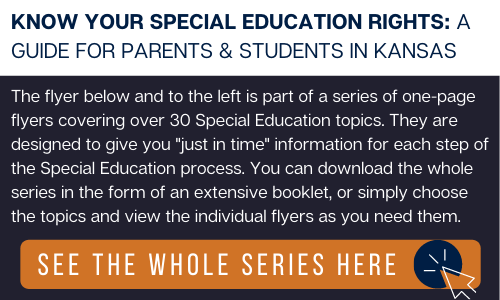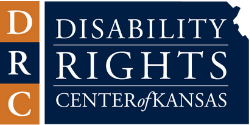What is Child Find?
 |
 |
PDF Version: What is Child Find?
PDF Version: Full Guide of all 30+ Flyers (Compiled as a Booklet)
Versión en Español en Formato PDF: ¿Qué Es Child Find?
Child Find requires each school district to identify students that might need special education services. Federal law requires every state to operate a thorough Child Find process. It includes all children and youth from birth to age 21. They may be in private schools, home schools, homeless, in foster care, in institutions, etc.
It does not matter if your child is too young to be in school. If you think they might need special education services, Child Find still applies. Child Find in Kansas uses a screening process for children birth to age 5. If your child is 3 through 21, call the school district or special education director for a screening. If your child is birth through 2, contact your local Infant -Toddler Network to get a screening. Once a parent asks for a screening, it should happen within 30 calendar days.
You can find your local Infant-Toddler office here.
If you think your child has a disability, you have the right to ask the school to evaluate your child. If you want your child to get an evaluation, write a request to the school. The school must generally respond in writing within 15 school days. The school district has 60 school days to complete the whole process which includes an evaluation, a meeting to see if your child needs an IEP, writing the IEP and putting the IEP into action. The evaluation timeline starts the day you sign and return the paperwork that you agree to the evaluation.
The law says that all schools have to identify children with disabilities through this Child Find program. If you have more questions about Child Find, contact the Disability Rights Center of Kansas or Families Together, Inc.
Sources & Additional Resources:
Kansas Special Education Process Handbook, Chapter 2. Kansas State Department of Education.
Parent Guide to Special Education. Kansas Department of Health and Environment.
Disclaimer: This fact sheet is not intended to provide specific legal advice. If you need legal advice, please contact an attorney. Only an attorney can give you specific legal advice based on your particular situation. We try to update our materials regularly, but the law can change frequently. This publication is based on the law at the time that it was written. Future changes in the law could make information in this fact sheet inaccurate.
.png)





